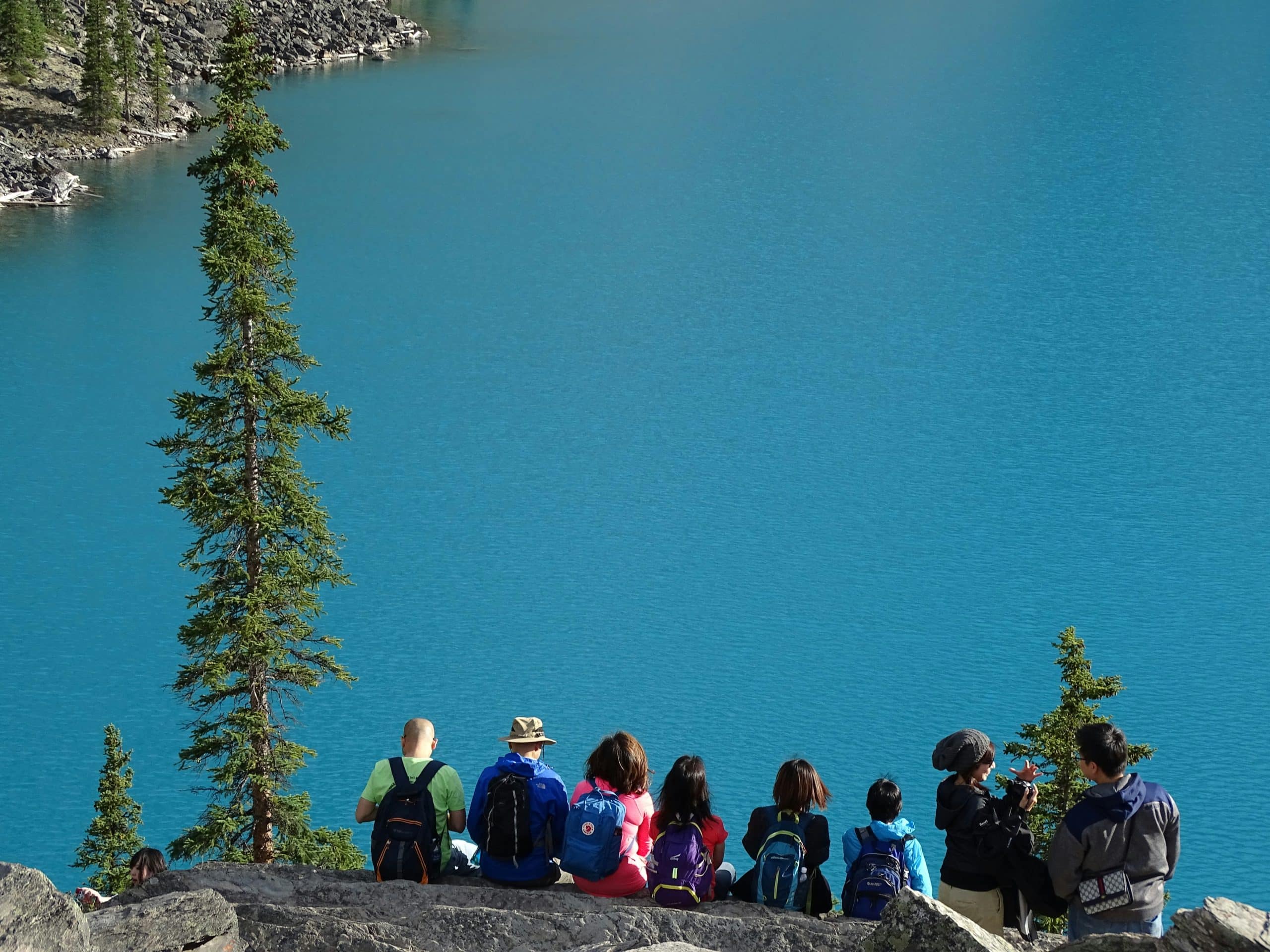What Is the Role of Technology in Promoting Sustainable Tourism Practices?

As we navigate through the 21st century, the role of technology in every aspect of life grows increasingly significant. One of these areas is tourism – an industry that is continuously evolving due to technological advancements. At the same time, sustainability is becoming a crucial aspect of our daily lives. But how do these two elements intertwine? How is technology being used to promote sustainable tourism practices?
The Interplay of Sustainability and Technology in Tourism
Sustainability is no longer a buzzword; it’s a necessity. And in the world of tourism, it has become an integral part of the strategic development and management of destinations. However, managing sustainability in tourism requires the leveraging of technology. This section illuminates the interplay between technology and sustainability in the tourism industry.
A lire également : How can businesses leverage chatbots to stand out ?
Firstly, technology aids in the analysis of tourism’s impact on local communities and the environment. Technological tools such as Geographic Information Systems (GIS) allow for the collection and analysis of data on various aspects, ranging from the number of visitors to the environmental impact. Such insights are invaluable in planning and implementing sustainable practices.
Secondly, information and communication technologies (ICTs) have revolutionized the way in which information about sustainable practices is disseminated. Websites, apps, and social media platforms are now used to educate tourists about the importance of sustainability and how they can contribute.
A découvrir également : How can quantum encryption secure sensitive data?
Sustainable Tourism Management Through Technology
Now that we’ve established the importance of technology in promoting sustainability, let’s delve into how it facilitates sustainable tourism management.
In tourism management, technology plays a vital role in data collection and analysis. This data guides decision-making processes, helping to ensure that they are based on facts, not assumptions. For instance, smart technologies can be used to monitor energy consumption in hotels, helping to identify areas where energy use can be reduced, thereby promoting sustainability.
Moreover, digital technologies are altering the way we book and manage travel. Online booking systems, for instance, enable us to minimize the use of paper, thus reducing our environmental footprint. Furthermore, many of these platforms now provide information on the sustainability practices of the destinations, accommodations, and activities they list, empowering tourists to make more sustainable choices.
Promoting Sustainable Local Development Through Technology
In addition to assisting in the management and analysis of sustainable practices, technology has a vital role in promoting sustainable local development in tourism destinations.
Technology enables destinations to showcase their unique offerings and attract the right kind of tourists – those who appreciate and respect local cultures, traditions, and environments. This can contribute to the development of sustainable tourism that benefits local economies without compromising cultural integrity or environmental health.
Technology also enhances communication between tourists and local communities. Digital platforms can promote local experiences and products, foster understanding, and build relationships. This not only enriches the tourist experience but also contributes to local economies, creating a win-win situation for both parties.
Technology for Smart and Sustainable Destinations
The concept of smart destinations is gaining traction in the tourism industry. But what does it mean, and how does technology factor into it?
Smart destinations are those that leverage technology to enhance the tourist experience while promoting sustainability. They use technologies such as big data, the Internet of Things (IoT), and artificial intelligence (AI) to not only provide tourists with personalized and enriched experiences but also to manage resources efficiently and sustainably.
For instance, smart technologies can be used to monitor and manage visitor flows to prevent overcrowding, a common issue in popular tourist spots that can lead to environmental degradation and diminish the tourist experience.
The Future of Sustainable Tourism: Technologies and Practices
While technology has already made significant strides in promoting sustainable tourism, the future holds even more promise.
Emerging technologies such as blockchain could revolutionize the transparency and accountability in sustainable tourism. For instance, it could be used to track and verify the sustainability claims made by hotels, tour operators, and other service providers, making it easier for tourists to make informed, sustainable choices.
Moreover, technology can foster greater collaboration among all stakeholders in the tourism industry – from tourists and local communities to businesses and authorities. This collaboration is key to the development and implementation of effective sustainable practices.
To sum it up, technology not only serves as a tool for implementing and managing sustainable practices in tourism but also plays a pivotal role in promoting sustainability. It enables data-driven decision making, enhances communication, facilitates local development, and paves the way for smart and sustainable destinations. As technology continues to evolve, so will its role in sustainable tourism, promising a future where tourism contributes positively to people and the planet.
Integrating Big Data and Data Analytics in Sustainable Tourism Development
In the ever-evolving digital age, big data and data analytics have marked their presence in several industries, including tourism. These powerful technologies have revolutionized the way tourism destinations operate, paving the way for more sustainable development.
Big data involves analyzing vast amounts of data to uncover patterns, trends, and insights. In the context of sustainable tourism, it can be used to predict tourist behaviour, monitor visitor flow, manage resources, and assess environmental impact. For instance, data analytics can provide valuable insights into how tourist activities contribute to carbon emissions, helping destinations to develop strategies for reducing their carbon footprint.
Additionally, data analytics can support destination management by providing timely and precise information. This technology enables the visualization of data in an understandable and interactive manner, allowing stakeholders to make informed decisions. For instance, it can reveal peak travel times, enabling authorities to manage visitor flow and prevent overcrowding, thereby reducing the strain on local resources and infrastructure.
Moreover, by leveraging big data, tourism destinations can gain a better understanding of tourists’ preferences and behaviours. This is crucial for developing tourism products and services that are not only appealing but also eco-friendly.
Lastly, big data and data analytics can also assist in monitoring and evaluating the effectiveness of sustainability initiatives. For instance, they can be used to track changes in visitor behaviour in response to sustainability campaigns, providing valuable feedback that can be used to improve future initiatives.
Augmented and Virtual Reality: Enhancing the Tourist Experience While Promoting Sustainability
Augmented reality (AR) and virtual reality (VR) are among the most exciting technological innovations in recent years, and their application in the tourism industry is rapidly gaining traction. By enriching the tourist experience, these technologies can contribute to sustainable tourism development.
AR and VR can offer immersive experiences that educate and engage tourists. For example, they can be used to create virtual tours of natural and cultural heritage sites, allowing tourists to explore these places without physically being there. This can help to alleviate the pressure on popular tourist spots, reducing environmental impact and helping to preserve these sites for future generations.
Moreover, these technologies can be utilized to promote local cultures and traditions. For instance, VR can be used to recreate traditional ceremonies or events, providing tourists with a deeper understanding and appreciation of local communities.
Additionally, AR and VR can be integrated with other technologies to provide a more personalized and sustainable travel experience. For instance, they can be combined with big data and AI to tailor recommendations based on individual preferences, promoting sustainable alternatives that tourists might otherwise overlook.
These technologies can also support sustainable destination management. For example, VR can be used to simulate the potential impact of various actions on the environment, aiding in the decision-making process.
Conclusion: The Future is Green and Digital
Technology has undoubtedly revolutionized the tourism industry, and its role in promoting sustainable practices is increasingly significant. From data analytics to AR and VR, various technologies are being utilized to enhance the tourist experience, ensure efficient destination management, and promote eco-friendly practices.
While we’ve made significant strides, there’s still a lot more to explore and accomplish. With emerging technologies such as blockchain and AI, we’re on the cusp of a new era in sustainable tourism. These technologies hold the potential to further enhance transparency, accountability, and collaboration in the tourism industry, making it easier for all stakeholders to work together towards a common goal: sustainable tourism development.
In the face of growing environmental concerns, it’s imperative that we continue to leverage technology to promote sustainable practices. As we move forward, one thing is certain: the future of tourism is not just digital; it’s also green. Technology, when used responsibly, can enable us to explore and appreciate the wonders of our planet without causing undue harm, ensuring that future generations can do the same. This is the essence of sustainable tourism, and technology is the key to achieving it.
